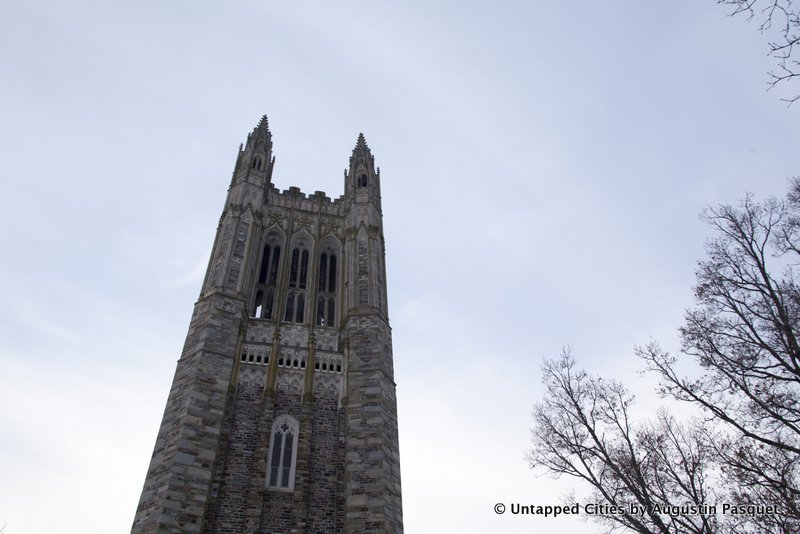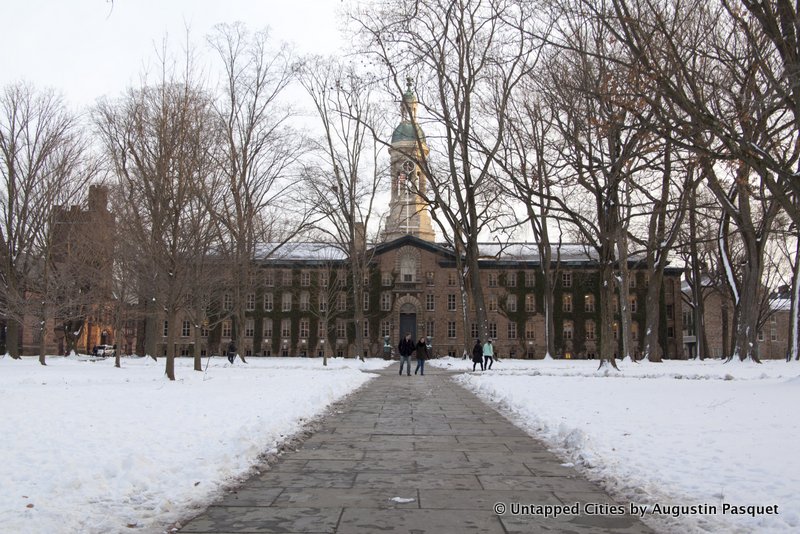6. Princeton Campus
 Grover Cleveland Tower with the Class of 1892 Bells
Grover Cleveland Tower with the Class of 1892 Bells
Omiecinski, a Southerner herself, explains how Princeton got its Southern charm from a historical perspective. There were three crises of enrollment at Princeton, the first one due to the secularization of the country and education around 1812. Religious colonial families that once formed the bulk of the Princeton class felt uncomfortable with the shift and the school president headed down south to find the sons of wealthy plantation owners who could use an education – and one more conservative than could be found at Harvard or Yale. By the Civil War, says Omiecinski, “half of the student body was from the South.”
 Nassau Hall, the oldest building on the Princeton campus built in 1756
Nassau Hall, the oldest building on the Princeton campus built in 1756
The level of wealth and exclusivity from this Southern student body and the school’s donors explains Princeton’s relatively late move to integrate the school in terms of gender and race, but something the school has actively moved to counteract since.
Princeton, considered one of the most beautiful college campuses in the country, was intended by Woodrow Wilson to feel like Oxford with a predominantly Gothic architecture aesthetic, contrasted with Tudor revival buildings that line the main streets.
Two things to look out for: black stars below the windows of the dorms that mark Princeton students that fell in the various World Wars. Inside these dorm rooms are large plaques that tell the story of the student and how they died. Another spot is the Grover Cleveland Tower in the Graduate School, that contains a 67 bell carillon, known as the Class of 1892 bells. The bells, cast in England, France and the Netherlands, weigh from 14 pounds to 12,880 pounds.





